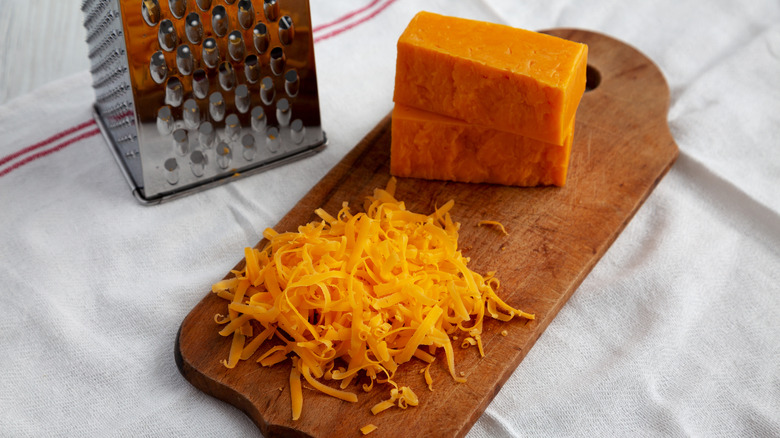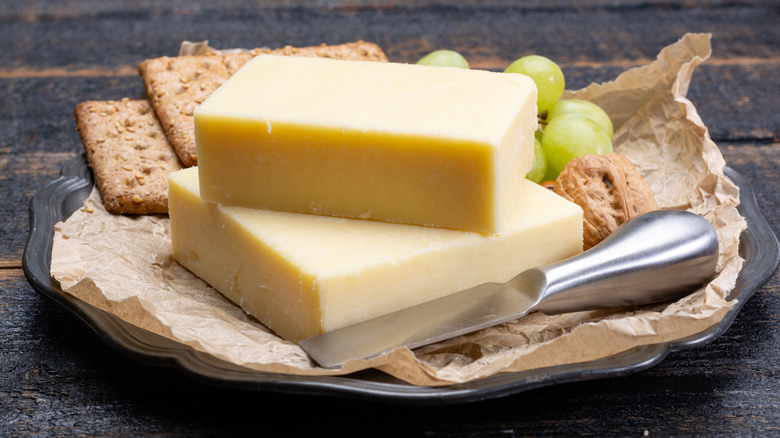How The Aging Process Affects The Taste Of Sharp Cheddar Cheese
Buttery and ideal for melting, cheddar cheese has won over hearts worldwide. Whether you're cutting slices for crackers or shredding a block to make broccoli cheddar soup, cheddar cheese can lend a rich, satisfying element to countless meals and snacks. All cheddar isn't created equal, however, and the aging process of the cheese can impact both its taste and texture.
When wheels and bricks of cheddar are left to age, the cheese becomes more crumbly and crunchy over time. Tangier flavors develop as the cheese matures. You'll see these differences reflected in the names of the cheeses on supermarket shelves. When a cheddar is labeled "sharp," the name helps signify that the cheese has developed a more mature flavor and texture. While mild cheddars are left to age for a couple of months, sharp cheddars develop for at least a year. Extra-sharp cheese varieties are aged for longer and can be matured for up to two years to build rich flavors and crunchy crystals known as calcium lactate.
What to pair with cheddar cheese
When sampling the different varieties of cheddar cheese, notice the creamy taste of mild and young cheeses as opposed to the tangy tinge of the sharper, older variations. The sweetness that is present in younger varieties fades as earthy, nutty tastes move to the forefront, and the more mature cheeses can be carefully paired with dishes to offer a richer gastronomic experience.
Sharp cheddar's flavor pairs well with sweet, fruity ingredients like apples and figs. The texture of cheddar can also be highlighted by whole-grain crackers and toast, and bites of this sharp cheese can complement alcoholic beverages like wine, beer, and whisky. Aged cheddars pair well with double IPAs and glasses of shiraz, Rioja, or cabernet sauvignon. Experiment with condiments like mustard or add sprinkles of flaky salt to maximize the flavor. For a hotter food pairing, try folding different cheddars into your next mac and cheese recipe.

